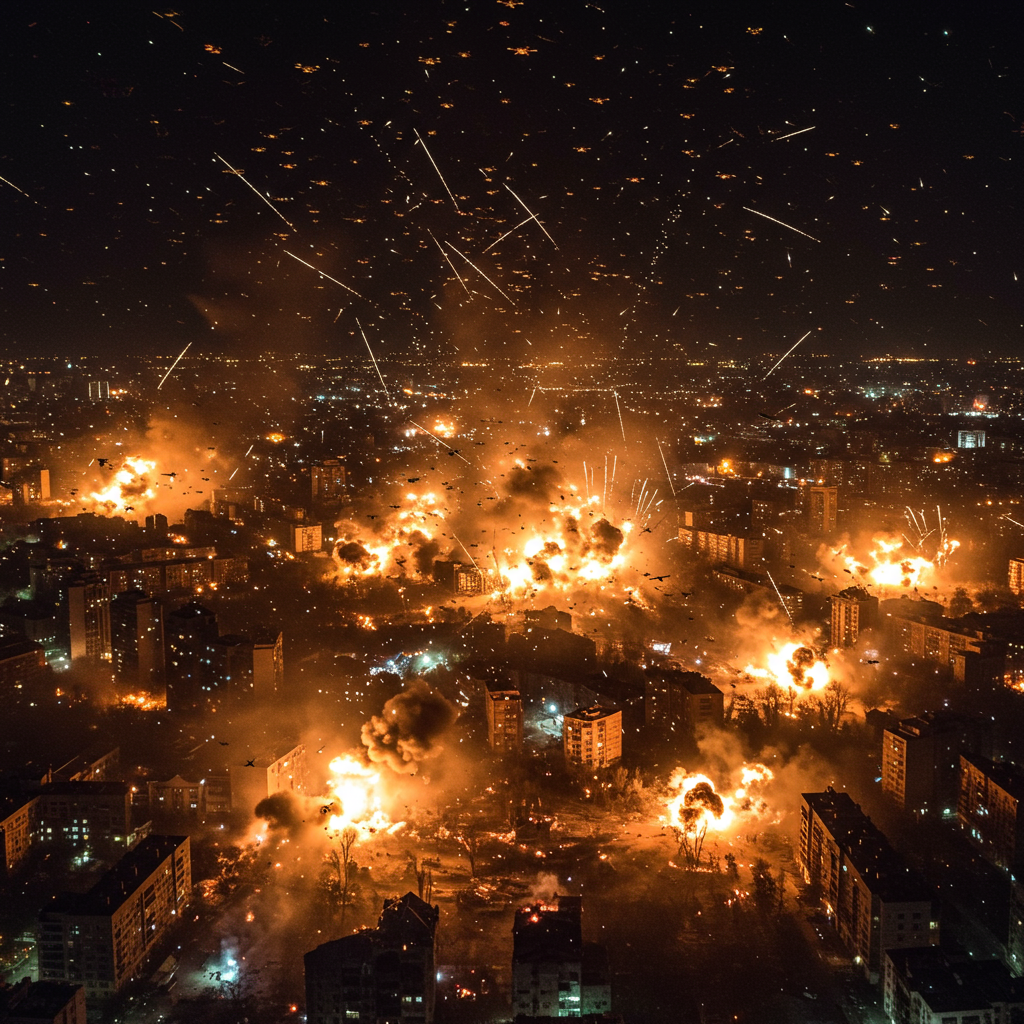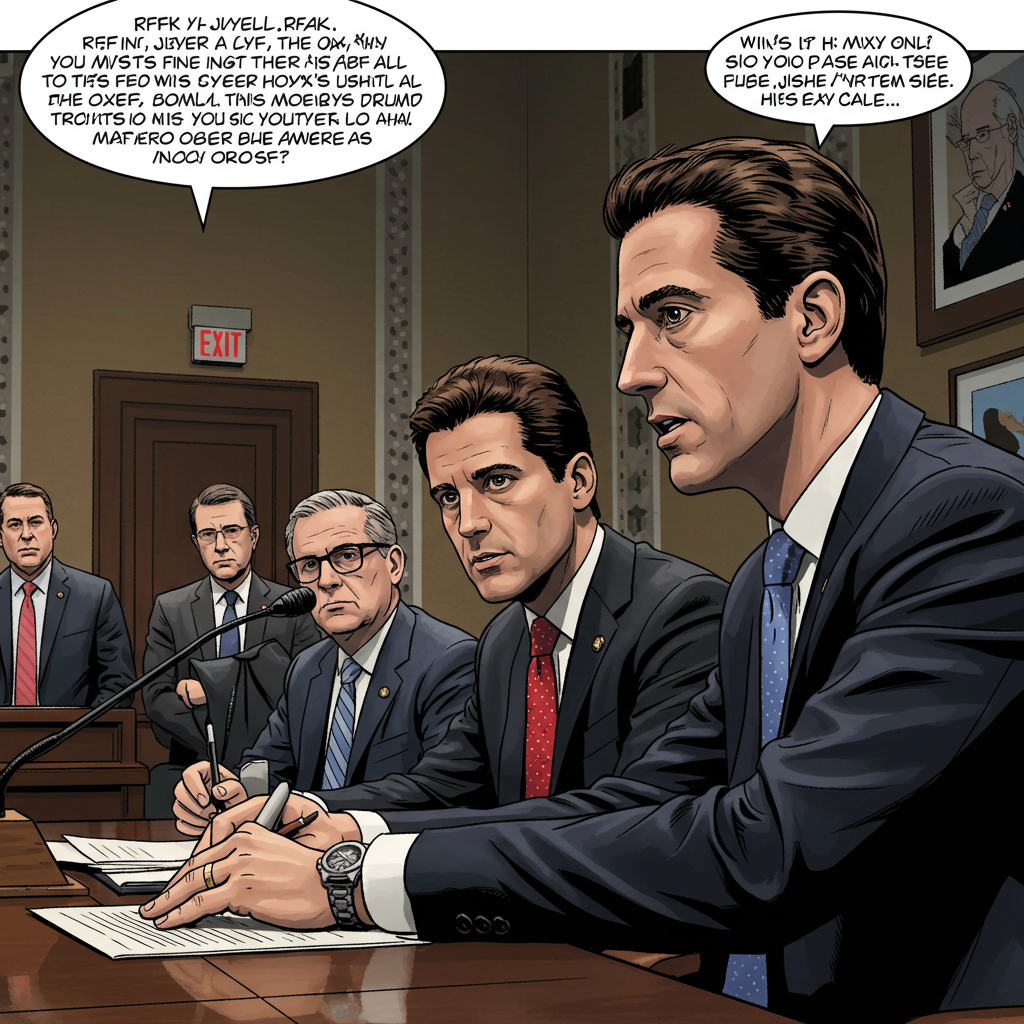On the morning of July 4, 2025, russia launched an unprecedented aerial assault across ukraine, primarily targeting the capital city, Kyiv. This massive barrage involved hundreds of drones and missiles, marking the single largest aerial attack since the conflict began more than three years prior. The devastating seven-hour onslaught resulted in numerous casualties and extensive damage across the capital, plunging residents into a harsh, sleepless night marked by wailing sirens and echoing blasts. Emergency services raced through debris-strewn streets under the stark reflection of blue lights off damaged buildings.
The attack’s sheer scale and timing immediately drew sharp reactions from Ukrainian officials and highlighted the brutal reality of the ongoing conflict. Ukrainian president Volodymyr Zelenskyy described the night as particularly difficult. He characterized the strikes as a deliberate and cynical act of terror by Moscow, signaling a clear lack of intent to end the war. This intensified aggression coincides with a renewed Russian push along the nearly 1,000-kilometer front line, where Ukrainian forces face severe pressure.
Unprecedented Scale and Impact in Kyiv
The overnight assault saw Russia deploy approximately 550 drones and missiles across Ukraine. According to Ukraine’s air force, this included a record number of Shahed attack drones, supplemented by 11 missiles. While Ukrainian air defenses actively engaged the incoming threats, the volume of the barrage overwhelmed some areas.
The impact in Kyiv was severe and widespread. At least 23 people sustained injuries across the capital, with initial reports indicating 14 individuals required hospitalization. Multiple residential buildings bore the brunt of the strikes or falling debris. Damage was reported across at least five, and potentially almost every, of Kyiv’s ten districts.
Specific damage accounts painted a grim picture. In the Solomianskyi district, a five-story residential building was partially destroyed, and the roof of a seven-story building caught fire. Fires also erupted at a warehouse, a garage complex, and an auto repair facility in the same area. The Sviatoshynskyi district saw a 14-story residential building struck, triggering a fire and damaging nearby cars.
Further destruction occurred in the Shevchenkivskyi district, where an eight-story building sustained damage to its first floor. Falling debris from intercepted munitions impacted sites in the Darnytskyi and Holosiivskyi districts. Even critical infrastructure was targeted, with Ukraine’s national railway operator reporting damage to rail lines in Kyiv from drone strikes. The consular section of Poland’s embassy in central Kyiv also sustained damage, though thankfully staff were unharmed. The sheer volume meant debris fell at 33 different locations across the country.
Ukrainian Response and Interceptions
Ukrainian air defense units worked tirelessly throughout the night to counter the aerial assault. Official reports indicated that 270 targets were successfully shot down, including two cruise missiles. An additional 208 targets were lost from radar contact, presumed to have been successfully jammed or diverted.
Despite these efforts, Russia confirmed hits at eight locations using a combination of nine missiles and 63 drones. The constant buzzing of drones overhead and the intense sound of machine gun fire as Ukrainian forces attempted interceptions were a terrifying soundtrack for Kyiv residents seeking shelter.
Witnesses described scenes of chaos and fear. A 23-year-old wedding photographer named Alya Shahlai recounted how her home was destroyed. She and her family took shelter in their basement just minutes before a loud explosion plunged their temporary refuge into darkness, causing panic among those inside. Economy Minister Yuliia Svyrydenko highlighted the harrowing scenes of families rushing into metro stations, basements, and underground parking garages to escape the bombardment. She echoed President Zelenskyy’s sentiment, calling the events in Kyiv “a deliberate act of terror.”
Political Context and Diplomatic Fallout
The timing of this massive attack added a layer of political tension. The assault on Kyiv began on the same day U.S. President Donald Trump had a scheduled phone call with Russian President Vladimir Putin. President Zelenskyy explicitly stated that this simultaneous timing was a deliberate signal from Moscow, indicating its lack of interest in pursuing peace.
Following his conversation with President Putin, President Trump expressed disappointment. He told reporters that he had made “no progress at all” on securing a deal to end the fighting in Ukraine. Trump conveyed his unhappiness with the situation and stated his belief that Putin was “not looking to stop” the war.
The Kremlin offered its own perspective on the call. Yuri Ushakov, Putin’s foreign affairs adviser, stated that the Russian leader emphasized Moscow’s resolve to achieve its strategic goals in Ukraine. These goals include removing what Russia terms the “root causes” of the conflict. Ushakov stressed that Russia “will not back back from these goals,” reiterating Moscow’s longstanding position that any peace settlement must involve Ukraine abandoning its NATO aspirations and recognizing Russia’s territorial gains.
Broader Implications and Ongoing Challenges
The intensified aerial attacks are part of a broader pattern of escalation by Russia. Official data revealed that Russia launched 5,438 drones at Ukraine in June alone, setting a new monthly record. This strategy aims to wear down Ukrainian defenses and infrastructure.
The context of international military aid remains critical for Ukraine. The U.S. has reportedly paused some shipments, including vital air defense missiles needed to counter attacks like this one. Ukraine’s main European allies are exploring ways to increase their support to fill this gap. Meanwhile, Ukraine is working to bolster its own domestic arms industry, though building sufficient capacity is expected to take time.
The conflict also saw other notable events occurring concurrently. Dutch and German intelligence agencies reported finding increasing evidence of Russia’s “widespread” and “growing” use of chemical weapons, including the dangerous agent chloropicrin, on the front lines. This use, often deployed via drones, is seen as a more serious violation of the Chemical Weapons Convention. Additionally, Ukrainian drones reportedly struck targets inside Russia overnight, causing damage in regions like Rostov and near Moscow, highlighting the reciprocal nature of cross-border attacks. On the diplomatic front, Russia and Ukraine confirmed another prisoner exchange took place on the same day as the Kyiv attack, continuing a sporadic process of swapping captured soldiers.
Frequently Asked Questions
What was the scale and impact of Russia’s July 4th attack on Ukraine?
Russia launched its largest aerial attack since the war began on July 4, 2025, firing around 550 drones and missiles, primarily at Kyiv. The seven-hour assault injured at least 23 people in the capital and caused extensive damage across numerous districts, hitting residential buildings, railway infrastructure, and other facilities. Debris also fell at multiple sites across the country.
How did the timing of the attack relate to international diplomacy?
The attack on Kyiv began just hours after U.S. President Donald Trump spoke with Russian President Vladimir Putin by phone. Ukrainian President Volodymyr Zelenskyy stated this timing was a deliberate signal from Moscow indicating it has no intention of ending the war. President Trump later reported making “no progress” with Putin on a peace deal.
What is the current situation regarding military aid and Ukraine’s defenses?
The recent large-scale attacks underscore Ukraine’s urgent need for air defense systems, particularly as the U.S. has paused some military aid shipments, including crucial missiles. Ukraine’s European partners are seeking ways to provide more support, while Ukraine is working to develop its domestic arms production capabilities, a process that will require significant time to scale up effectively.
This unprecedented aerial assault served as a stark reminder of the ongoing intensity and human cost of the conflict in Ukraine. The extensive damage and casualties in Kyiv highlighted Russia’s continued reliance on long-range strikes as part of its military strategy, even as diplomatic efforts appear stalled and the conflict intensifies on the front lines. The events of July 4, 2025, further underscored the urgent need for robust air defenses and sustained international support for Ukraine.




